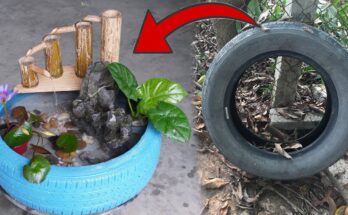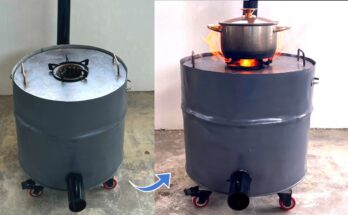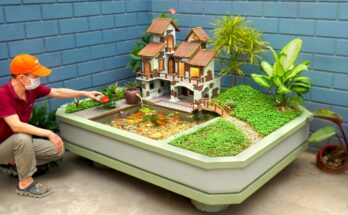A lathe machine is one of the most versatile tools in the workshop, often used for shaping materials like wood, metal, and plastic. While purchasing a lathe machine can be expensive, you can make a functional homemade lathe machine using a drill machine with a few easily available materials. This DIY project is not only cost-effective but also a great way to enhance your workshop setup.
Materials You’ll Need:
- Drill Machine: A standard electric drill will serve as the core of your DIY lathe machine.
- Wooden or Metal Base: A sturdy platform to mount the drill and other components.
- Bearing Blocks: For smooth rotation of the workpiece.
- Adjustable Clamps: To secure the drill machine in place.
- Metal Rods or Threaded Screws: These will act as the spindle for your lathe.
- Cutting Tools: Chisels or other turning tools for shaping your material.
- Bolts, Nuts, and Washers: To assemble the components securely.
- Sandpaper or Polish: To refine your finished product.
Step-by-Step Guide
Step 1: Prepare the Base
Start by preparing a sturdy base for your lathe machine. The base can be made from a thick wooden plank or a metal sheet, depending on what you have on hand. This base will serve as the foundation for the entire setup, so it should be stable and durable.
Step 2: Mount the Drill Machine
Secure the drill machine to one end of the base using adjustable clamps. Ensure the drill is aligned horizontally and its chuck faces outward. This alignment is crucial for the proper functioning of your homemade lathe.
Step 3: Install the Bearings
Fix two bearing blocks onto the base at an appropriate distance from the drill. The distance will depend on the size of the workpieces you plan to work on. Bearings allow the spindle to rotate smoothly, providing stability during operation.
Step 4: Attach the Spindle
Insert a metal rod or threaded screw into the chuck of the drill. This rod will act as the spindle of your lathe machine. Ensure it is securely fastened to avoid wobbling during rotation.
Step 5: Build the Tailstock
To support longer workpieces, create a tailstock at the opposite end of the base. You can use a simple adjustable clamp and a pointed metal rod to hold the material in place. The tailstock should align perfectly with the spindle.
Step 6: Add Tool Rest
Install a tool rest close to the spindle. The tool rest can be a metal rod mounted vertically with an adjustable horizontal piece where you can place your cutting tools. This feature helps you work with precision.
Testing Your Homemade Lathe
Before using your DIY lathe machine, conduct a test run. Secure a small piece of material between the spindle and tailstock, then turn on the drill. Check for stability and ensure the rotation is smooth. If everything is aligned correctly, your lathe is ready to use.
Safety Tips
- Always wear protective gear, including safety goggles and gloves.
- Secure the base to your workbench to prevent movement during operation.
- Ensure all components are tightly fastened before use.
Advantages of a DIY Lathe Machine
- Cost-Effective: Building your own lathe machine is significantly cheaper than purchasing one.
- Customizable: You can modify the design based on your needs.
- Satisfaction: There’s a unique sense of accomplishment in using a machine you built yourself.
With a bit of creativity and effort, you can create a functional homemade lathe machine using a drill machine. This DIY project is perfect for hobbyists, beginners, or anyone looking to expand their workshop capabilities without breaking the bank. Start building today, and unlock endless possibilities for your projects!


